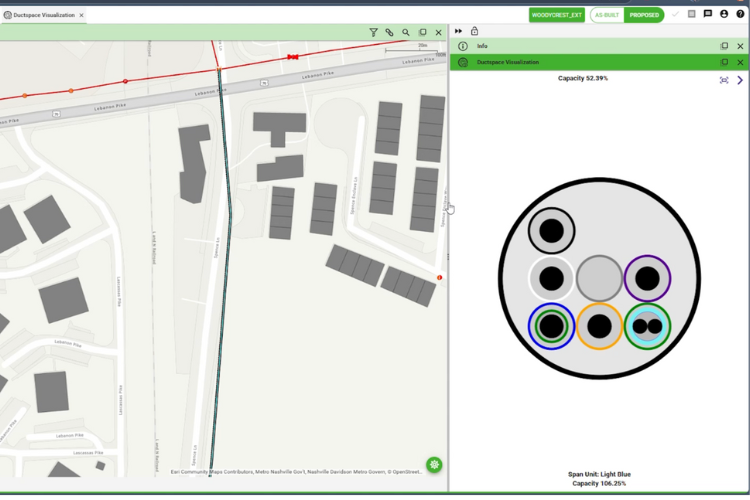It feels like the European fixed line telecom market is in change. After a frantic 10 years of network rollout, the industry is finally taking a breath and taking stock of the situation. For many, this pause in capital spend and network build out is allowing them to focus attention on system improvements and efficiencies, namely digital transformation.
At its core, digital transformation in telecom means moving away from fragmented legacy systems and siloed workflows towards more integrated, data-driven operations. For network operators, this transition isn’t just about implementing new tools—it’s about rethinking how they design, manage, and optimise their entire infrastructure. This includes adopting cloud-native systems, using automation to reduce manual effort, and leveraging advanced analytics to meet business opportunities and challenges.
As requirements change from speed and supporting network build out to operations and generating revenue, we are seeing that many companies are recognising that the systems they have are either old and antiquated, or focused on network rollout and don’t have the necessary functionality to manage and operate a fibre network at scale.
For many, digital transformation is a resolution to this problem, and many specialist companies are leading efforts at Tier 1 operators across Europe to transform systems and bring them up to date.
So, what does this mean for network management? It isn’t possible to cover all of that in one blog post, but let’s take a moment to focus on two main themes.
Data takes centre-stage
Traditionally network management has focused on users and features. How can we give engineers and users the tools they need to do their jobs? How do we streamline their work with automated/semi-automated tools to manage and design fibre networks? The value of a good network management system was judged on how much time could be saved using productivity tools.
This is no longer the case. Now, the value of a network management system is transitioning to data veracity (how much confidence do we have in the network data as a business?) and how easily accessible that data is (can I work with the data in any other system in my enterprise estate?). This means that network management systems ready for Tier 1 operators in 2025 are not the ones boasting that they speed up network deployment but are established systems that have a robust method of maintaining very accurate data and have an open (non-proprietary) architecture built on industry standard APIs.
If we take the illustration below, which considers several key functions that OSS and BSS systems manage at Tier 1 operators, you start to get the picture of what modern telcos are focused on in digital transformation projects. They are looking for automation of key revenue generating activities and network management operations. In a world of automation, users and features become irrelevant, and data and accessibility become everything. For example, as a telecom network management system, 3-GIS plays a key role in underpinning all major transformation. Along with the logical network inventory, it is the system of record that all automation and AI tools should be built on top of.

The goal is no longer simply visibility, but actionability. Data should not just be correct and accessible—it should be enriched, contextualised, and ready to drive decisions across business units. Whether it's triggering automated provisioning or supporting customer experience initiatives, the quality and agility of your data pipeline will directly impact operational efficiency and revenue potential. For operators, this marks a shift in strategy: investing in the data lifecycle becomes just as important as investing in the physical network.
Scalability becomes more important than ever
In addition to a change in the way they are viewed at telcos and the value they provide, the demand on network management systems through digital transformation will increase dramatically.
Digital transformation projects are demanding automation of processes that require intense analysis of network data to be fulfilled accurately and with confidence. As we move from hundreds of users answering questions manually, to multiple systems asking millions of questions of the network data daily, the system will need to scale to support that traffic. This should be a consideration for any company looking into transformation. Network management solutions that have focused on features and functions, over getting the basics right, will struggle to scale to meet automation needs and requirements. This often leads to companies not receiving the value they expect out of a new network management solution, as the solution has good tools but cannot handle the expected throughput of the business.
Another game-changing factor is the exploration into AI and how it can be leveraged to make smarter decisions. The industry is starting to find real use cases that provide business value from AI and as this work continues and grows, we will see demand on network management systems increase. Due to the nature of AI tools, questions being posed to the network data will multiply at an exponential rate.
This means that the value of a network management system will additionally transition to scalability and how the solution can scale to meet the automation and AI initiatives being implemented in the business.
In essence, digital transformation for network operators is about preparing for scale in every sense—scale of data, scale of decision-making, and scale of innovation. Only platforms that are built with scalability, openness, and data-centricity at their core will be able to support this next wave of transformation.
This feels like an important time for the industry that we all work in, a dynamic time of new possibilities and change. And as the old saying goes, a change is as good as a holiday.



